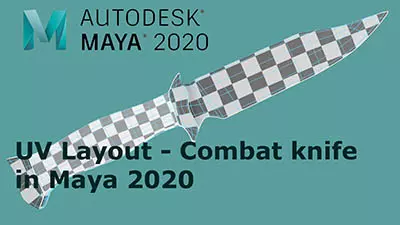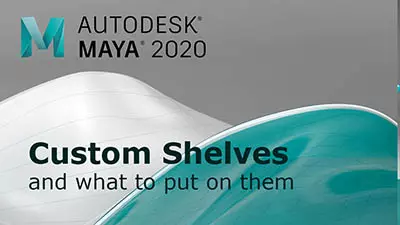Introduction to Maya - Modeling Fundamentals Vol 1
This course will look at the fundamentals of modeling in Maya with an emphasis on creating good topology. We'll look at what makes a good model in Maya and why objects are modeled in the way they are.
#
1
27-08-2014
, 08:24 PM
Registered User
Join Date: Aug 2014
Join Date: Aug 2014
Posts: 4
GPU
I have done a lot of reading on GPU's. I have used every 3D card (consumer/gamer) since the 4MB 3Dfx to the 12MB SLI to my last card the R9280X. I have learned the majority of the differences in the pro cards and the reason for most.
I am just getting back into Maya/3ds Max after double digit years of not using the programs. So lets just pretend this is day one for me all over again. Perhaps I have read the answer to my question already and just didn't know the vocabulary.
When using Maya, my concern is regarding the models that I will be creating and animating and moving around the view ports. Not the speed of the rendering of the final animations.
My wife uses Google Sketchup Pro and recently completely a Permaculture landscape design for a client. It wasn't what I would consider a terribly complex scene. Not sure of the poly counts, but no sort of particles or hi-res textures. Without using layers and hiding the majority of the trees and so forth, it was literally unworkable. Moving the mouse to change the angle of view or selecting an object took several seconds to respond. I little reading suggests it might just be the Sketchup program. However, recently sold the R9280x and it is running just off of the Core i5 Haswell's built in HD4600. I realize this isn't much if any of a GPU. My machine is literally the same spec, I built them both at the same time. When running Maya and creating very basic shapes, its quite smooth.
My question (if you made it this far) is when building more and more complex scenes, how much will the system off load to the GPU? Lets say a Quadro card around K4200 or so. Are the GPU's primarily used during final render or do they make a substantial difference in the viewports. I am not a professional so I will not be losing money on render times because...no money to lose. However, I want a smooth user interface while I am learning/working in the program without the slideshows.
For my needs would a consumer card give me a boost if I am not overly concerned with stability or double point precision and just want a useable work space?
Sorry for this awkward question, hope you can help.
Intel Core i5 Haswell (3.0Ghz)
8GB RAM
Samsung 840 Pro SSD
Win7 64
Maya 2015 Student
3ds Max 2015 Student
#
2
27-08-2014
, 11:05 PM
#
3
28-08-2014
, 12:44 AM
Registered User
Join Date: Aug 2014
Join Date: Aug 2014
Posts: 4
Thank you so much for your input.
There isn't much I can do about the CPU for now, and I imagine it would really make too much difference unless I could step to a XEON and so forth. Do you think the 8GB may be scraping the minimum because I could go t 16GB there if it is worth it.
Thanks again.
#
4
28-08-2014
, 05:18 AM
It depends. When you open that scene, where is your memory usage at? There's no point in upgrading if you're not hitting what you already have.Do you think the 8GB may be scraping the minimum because I could go t 16GB there if it is worth it.
The GPU isn't used for much in Maya; it's mainly used for drawing things on screen. You might be able to get different speeds by utilizing viewport 2.0 (default in 2015+) and the legacy viewport. You can also turn on interactive shading, which helps in heavy scenes. https://download.autodesk.com/global/...mber=d30e70078
I came across this which you might find interesting: https://www.pugetsystems.com/labs/art...eleration-509/
But yeah; switching even to a lower-end Quadro will probably give you a good kick in performance with heavy scenes. If you're not using the machine as a gaming rig, then a workstation card is your best bet; which also has the added bonus that you don't have certain caveats and annoyances that can pop up with Geforce/Radeon cards. Make sure that the card you purchase is qualified, and utilize the tested drivers from Autodesk here: https://usa.autodesk.com/adsk/servlet...anuf=all&opt=1
Imagination is more important than knowledge.
Last edited by NextDesign; 28-08-2014 at 05:25 AM.
#
5
28-08-2014
, 07:18 PM
Registered User
Join Date: Aug 2014
Join Date: Aug 2014
Posts: 4
Thanks for all the help on my first post.
#
6
28-08-2014
, 08:12 PM
Registered User
Join Date: Nov 2003
Join Date: Nov 2003
Location: England
Posts: 19
Maya 2015 can use both openGL and also DirectX11 so the days of pushing quadro cards and firepro is only going to be for the very top end systems were talking "the best"....these cards are not cheap for a decent one!
You will be able to interactively move around a viewport with any high end gaming card in Maya, I have done this for a few years with heavy scenes + I saved some cash in the process....but to be fair with a very heavy scene even with the best graphics cards you would use use common sense to optimize a scene that makes the viewport more workable with things like bounding boxes , view selection , hiding objects until render, render layers etc instead of trying to manipulate a really high poly count scene all at the same time.
You mentioned memory, I do a great deal of dynamic destruction effects, explosions and fluid/liquid effects and if that's something you will be getting into (great fun) you will want to look at as much memory as you can get your hands on 8G is very usable for many scenes until you start getting more intense along this path then you might want to look at considerably more 16G, 32G, even 64G+ sometimes as it can be really memory hungry with a few simulations running, especially now with Bifrost + Bullet + NHair and fluid effects + Ncloth and NParticles

#
7
28-08-2014
, 09:24 PM
Registered User
Join Date: Aug 2014
Join Date: Aug 2014
Posts: 4
Posting Rules Forum Rules
Similar Threads
GPU acceleration question
by Razor512 in forum Lighting & Rendering replies 4 on 18-05-2011
gpu, hardware. quadro
by daza in forum Maya Technical Issues replies 1 on 02-03-2011
6000 word essay. Need topic suggestions.
by elephantinc in forum Maya Basics & Newbie Lounge replies 15 on 13-06-2010
GPU
by jpardoe in forum Work In Progress replies 3 on 27-01-2006
Which GPU should I use....?
by eth3rton in forum Maya Basics & Newbie Lounge replies 3 on 04-12-2005
Topics
Free Courses
Full Courses
VFX News
How computer animation was used 30 years ago to make a Roger Rabbit short
On 2022-07-18 14:30:13
Sneak peek at Houdini 19.5
On 2022-07-18 14:17:59
VFX Breakdown The Man Who Fell To Earth
On 2022-07-15 13:14:36
Resident Evil - Teaser Trailer
On 2022-05-13 13:52:25
New cloud modeling nodes for Bifrost
On 2022-05-02 20:24:13
MPC Showreel 2022
On 2022-04-13 16:02:13









